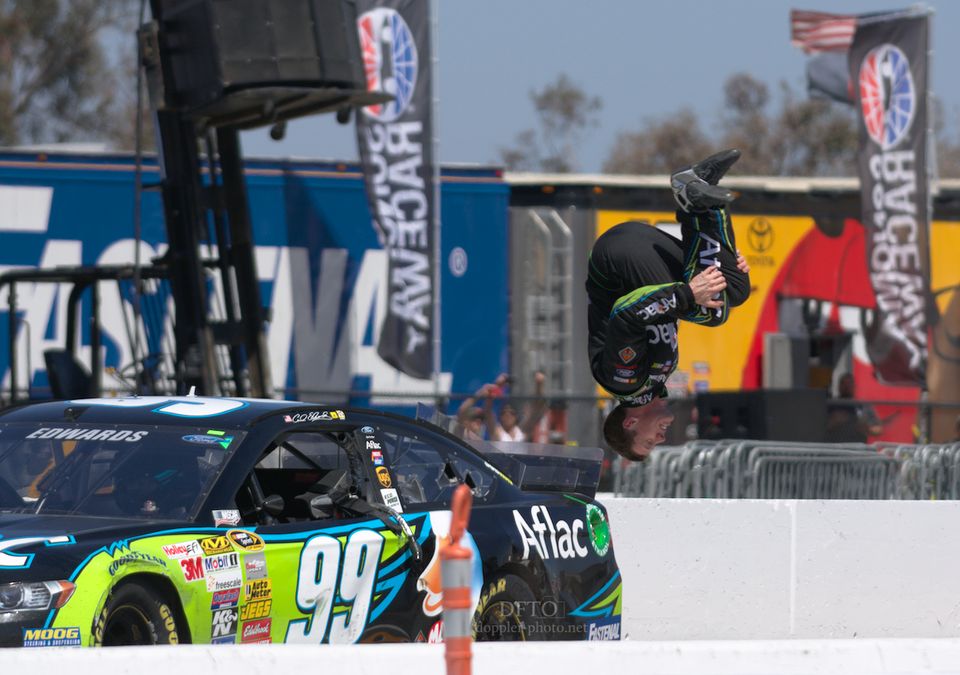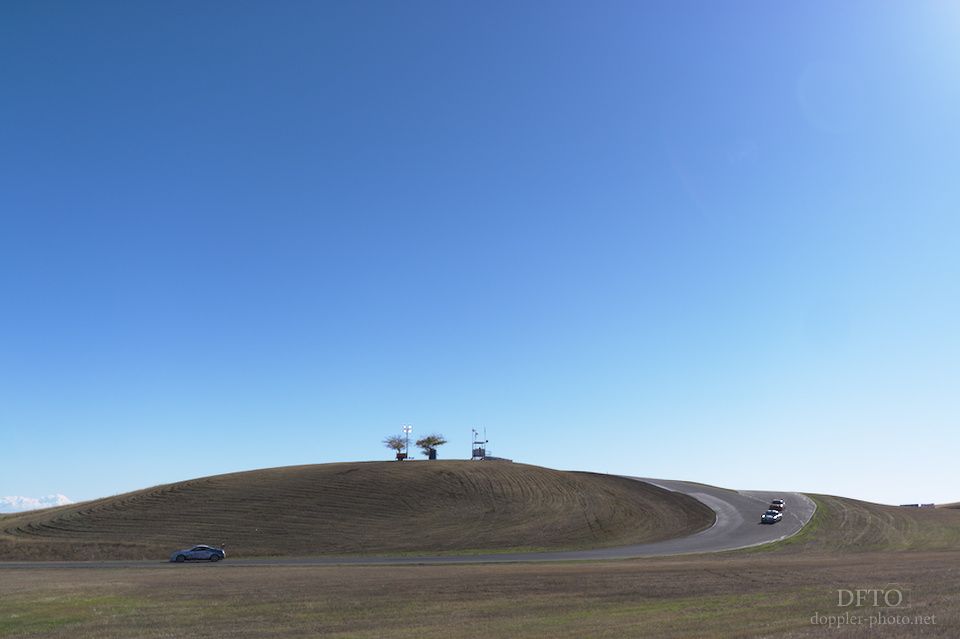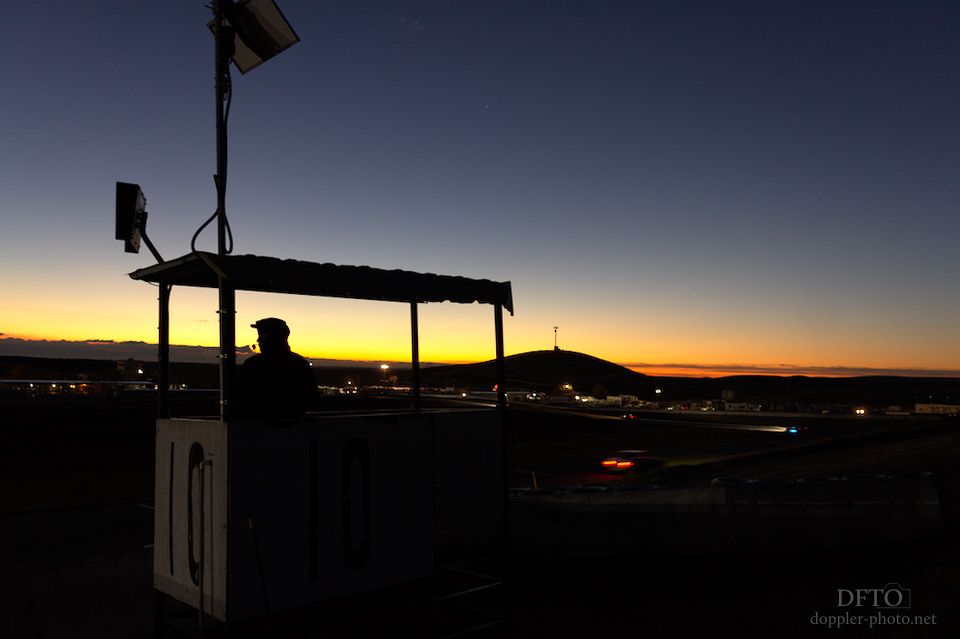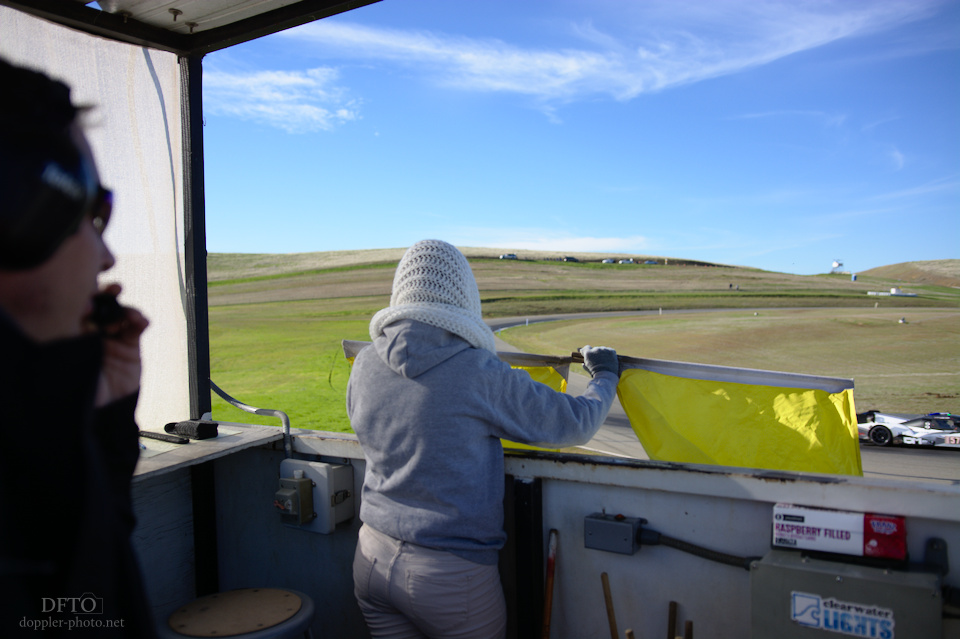
Flaggers are the second manifestation of Race Control. Just like the pit marshals on pit lane, the flaggers keep watch, enforce rules, and relay observations from around the track. They communicate with the drivers by way of a set of flags, and they use radio to communicate back and forth with Race Control, and/or with other flag stations.
The flags encode a small set of relatively terse messages, including things like "caution," "faster cars approaching," "dirt or oil on track," and "you did something bad; pit now." The flaggers also use motion to convey urgency — a waving flag is more urgent, a still (or "standing") flag is less urgent. Anything more nuanced will likely come over the radio, once the pit marshals talk to the driver's crew chief.
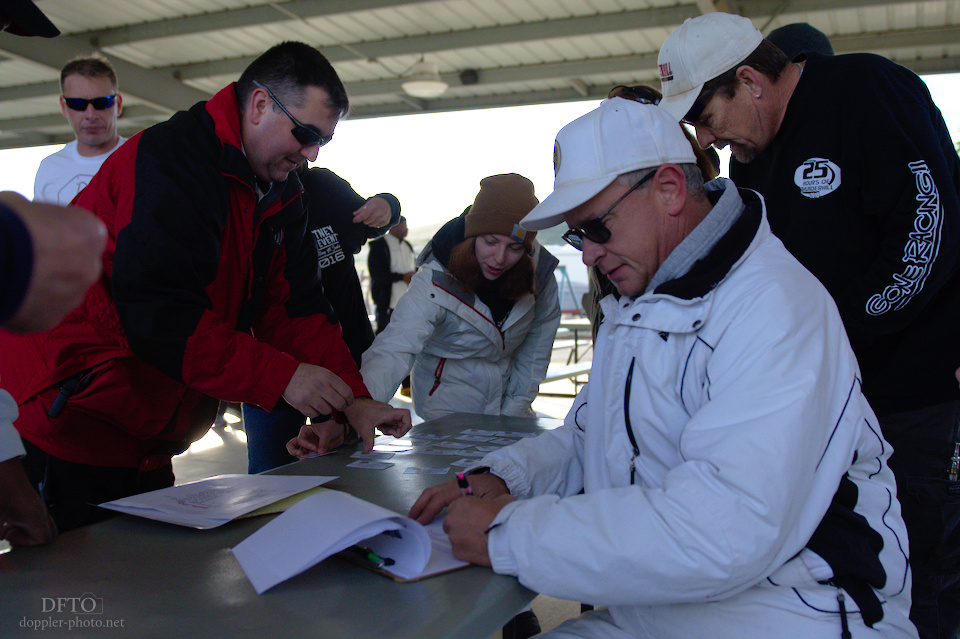
Much like the pit marshals, the day of a flagger also starts with a briefing. Most of them have prior experience, so Robert (second-from-left, in red), one of the race directors, focused the meeting on clarifying how to enforce "gray area" situations, such as if a driver accidentally passes under yellow, and tries to "give back" the place of the car they passed.
The flaggers were instructed to count that kind of give-back as two illegal passes — one for each car involved. The first driver shouldn't have made the pass, and the second driver should be aware that taking the place back also counts as an illegal pass.
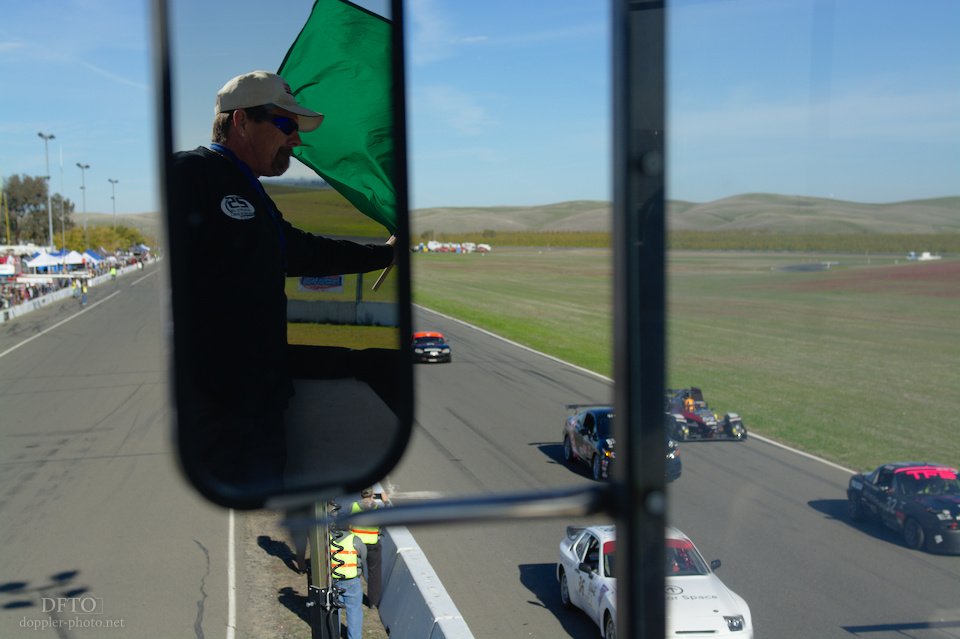
Once the briefing is over, the flaggers head to their respective flag stations and wait for the start. Rick was the start tower flagger for much of the race. In the minutes leading up to the green flag, he told us stories, and as he did so, he periodically repositioned himself in the start stand. He explained that some teams try to predict the green flag by watching the start flagger's posture. So his fidgeting was intended to disguise the actual start timing, to avoid those teams gaining an advantage over their competitors.
The actual balance of power between the flaggers and Race Control is interesting. Rick told us that, although Race Control tells him which lap to start on, he decides on his own when, during the start lap, to actually show the green flag and start the race. It's generally somewhere along the front straight, but the exact timing dictates when any car in the race can start accelerating in order to pass other cars.
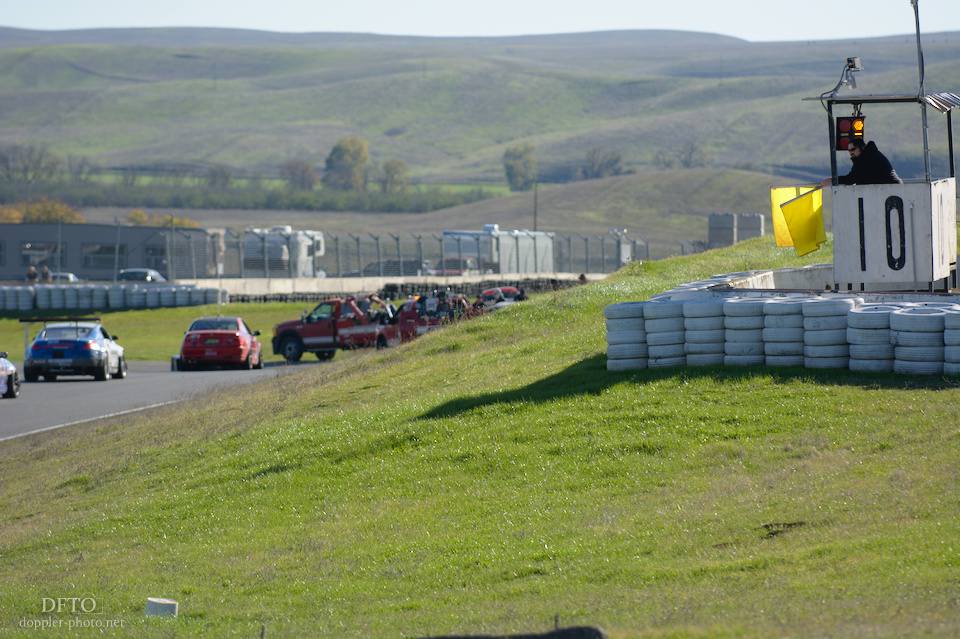
Once the race gets going, the flaggers have essentially three jobs: enforce rules, protect the drivers, and protect other track workers (like the safety crew). During a race, a driver's attention will be all over the place — radio, mirrors, dash, waypoints, traffic, race strategy…
The most important race flags are intended to cut through the noise and and let a driver know when they're approaching a dangerous situation, even if that situation might be beyond a steep crest or a blind corner. They're intended to pull the driver's attention from "try to win," and to force the driver to refocus on identifying and avoiding upcoming hazards.
That redirected attention makes it safer for Safety crewmembers and drivers to exit their vehicles in the aftermath of an incident. And the minimum penalties reflect the intention for drivers to do their part in maintaining a safe recovery environment: passing under a local standing yellow is a 5-minute penalty, passing under a waving yellow is 10 minutes, and passing under a waving yellow with Safety on scene is 30 minutes.
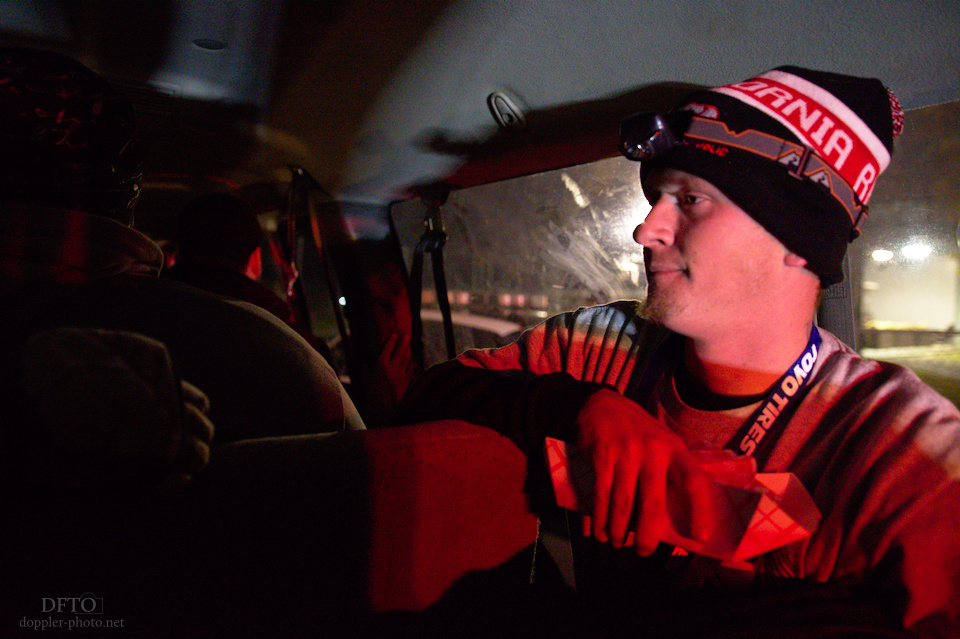
The flaggers work the race in two shifts of around 6 hours each. For the shift change, Safety provides a flashing-lights escort as a van brings the new flaggers to each flag station, and picks up the off-duty flaggers. Here, Quentin holds on to some food as he waits for the van to make its way to turn 3.
The track runs under full-course yellow as the wave of shift changes rolls from station to station. That allows the new flaggers to get situated and to start paying attention to traffic before the race goes back to green. During that period, the pace car leads the pack around the course to help make sure the van can drive on a clear track.
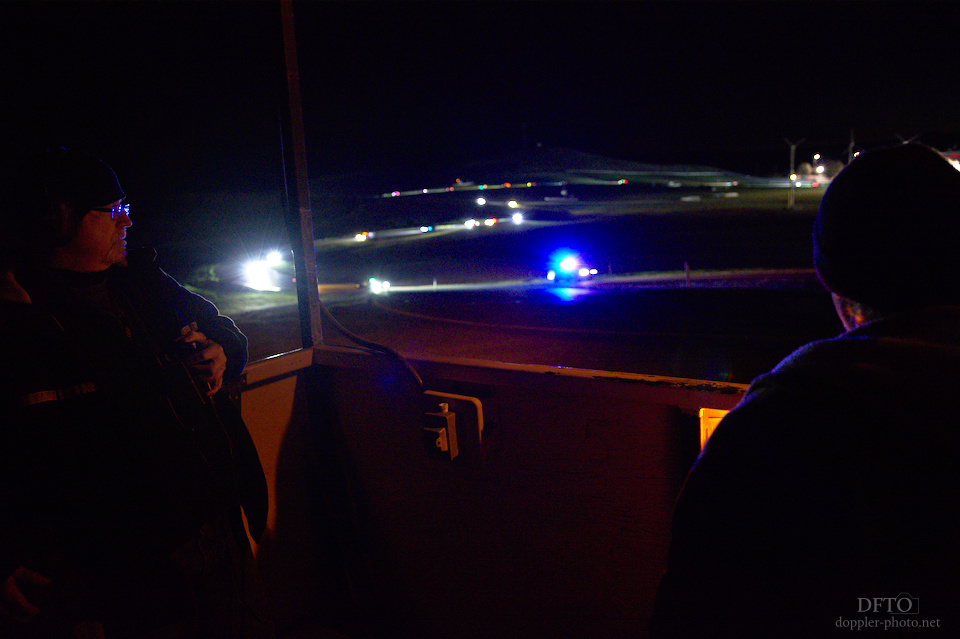
Once we got to turn 5, positioned at the so-called eagle's nest, I hopped out to chat a bit with Scott (left) and John (right). John mentioned that he got into flagging during his time racing with AFM (the American Federation for Motorcycles), and that he had been in motorsports for nearly 30 years.
Some flaggers work alone, and others work in pairs, with the pair usually splitting the radio and signalling tasks. Because waving flags would be well nigh invisible in the nighttime darkness, the flag stations are equipped with green-, yellow-, and red-colored lights to provide the same terse messages to the drivers as the flags that they match.
The station itself can trigger a solid or flashing yellow light, which corresponds, respectively, to a standing or waving yellow flag. Additionally, Race Control can trigger any of the three lights electronically from the control tower.
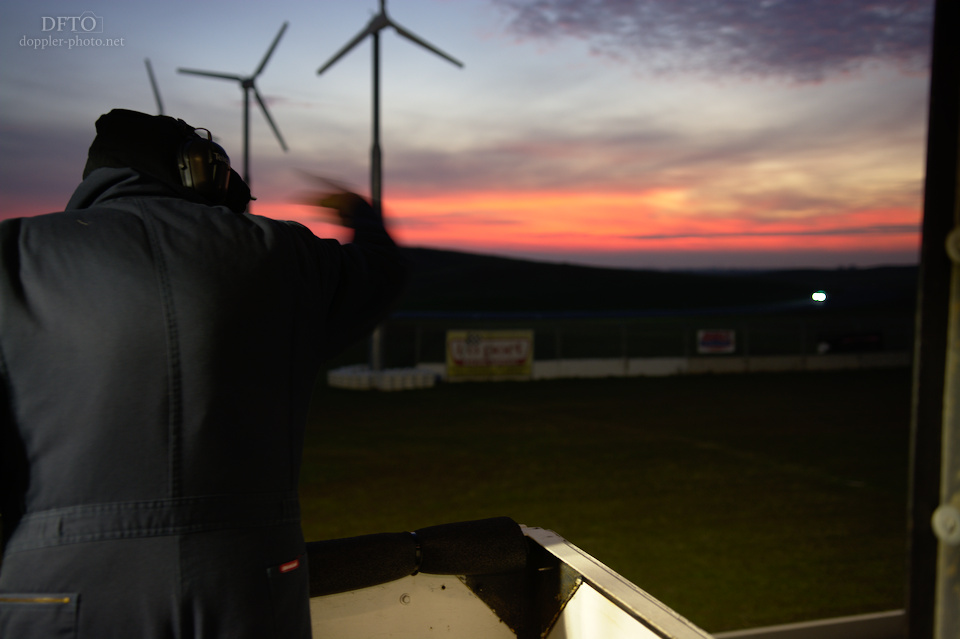
Finally, after a long night, the sun starts to illuminate the horizon as the race approaches its final hours. One convenience that the tower offers is to allow credentialed photographers to cross the hot track near the start-finish. The flagger will wait until the entire front straight is clear, all the way back to turn 15, and then will signal the photographer to get moving. Basically, "Run as fast as you can! Don't trip. Stay safe."
Coming up next time, don't miss a look at how the safety crew fits into the big picture. Click here to subscribe, and don't forget to share! The full Behind the 25 series:



